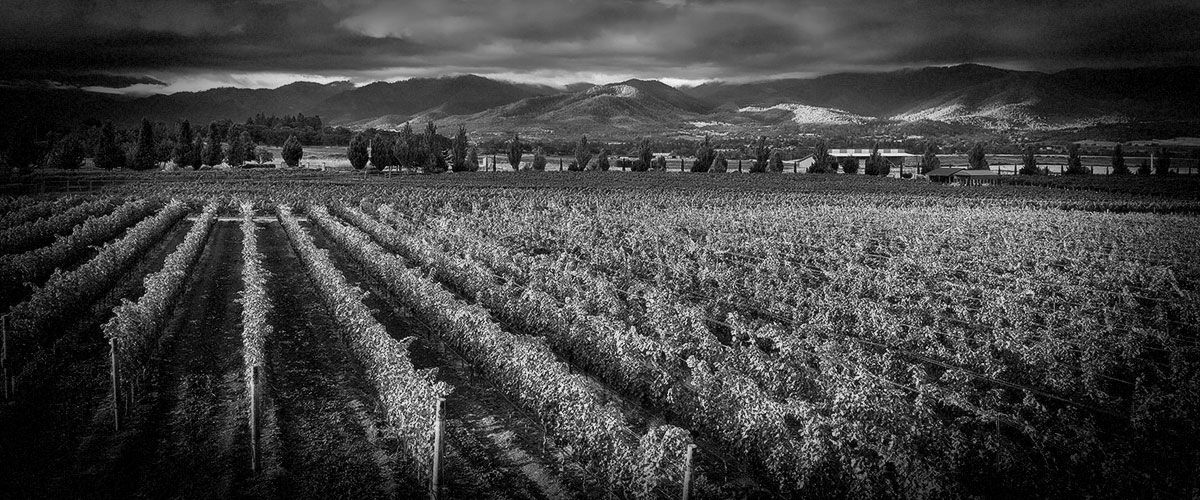by Chris Russell, Contributor
To make extraordinary wine, you need extraordinary grapes. The foundation—quite literally—of a vineyard that produces extraordinary grapes is the soil on which it sits. Here at 2Hawk, we’re proud of our unique terroir and the role its soil plays in making our wines memorable and distinct. In this post, we’ll explore the special contributions our soil makes to our wines.
How Soil Affects Wine
The significance of soil quality cannot be understated when it comes to the vineyard. Beyond the obvious—you need soil to grow grapevines—there are countless varieties of soil, each of which varies in how well it can support growth and how it must be managed to produce optimum fruit quality.
At a minimum, wineries consider soil structure, texture, depth, water holding capacity, drainage, pH, and nutrient availability when deciding how to plant and manage a vineyard. Soil management techniques can be employed to improve a soil’s potential. For example, tillage physically breaks up soil to enhance shallow soil structure while incorporating organic matter, which can increase water holding capacity.
Not all soils are well-suited to growing grapes of a particular variety. For example, Cabernet Sauvignon tends to outperform Merlot in gravelly or rocky soil, while Merlot handles clay soils pretty easily. This means soil type, along with other factors like climate, dictates the varieties of grapes grown in the vineyard.
Legend holds that fourteenth-century monks in Burgundy would actually taste the soil of their vineyards, sampling them in the hopes of identifying flavors that might emerge in finished wines. We wouldn’t suggest going that far, but there’s definitely an increasing awareness among wine connoisseurs that a vineyard’s soil contributes substantially to the overall character of a finished wine. Indeed, some restaurants are increasingly offering wine lists organized not by region or style but by soil geology. You may not be able to tease out the specific composition of a vineyard’s soil in your glass, but you can be assured a quality wine began with quality soil.
Soil in the Rogue Valley
The story of the Rogue Valley’s soil begins in the Klamath Mountains, which are made up of a variety of geologic formations, including lava flows, continental fragments, and ocean floor. As the Klamath Mountains were created and thrust upwards by the enormous pressures of plate tectonics, they began to erode, depositing their varied contents in valleys downstream over millions of years. As a result, soil throughout the Rogue Valley is surprisingly varied, with a mix of metamorphic, sedimentary, and volcanic soils. This means that within a relatively small area, you can find both well-draining sandy loam as well as dense, hard clay. One of the most interesting facts about the Rogue Valley is that many of our soils are not found anywhere else on the globe—yet one more reason this is such a special place to grow wine grapes.
This diversity in soil types and composition can be challenging as different types of soil require varied approaches to managing everything from nutrients to water content. Some vineyards in the Rogue Valley—2Hawk included—find themselves straddling two or more different types of soil, meaning what works in one part of the vineyard may not work in another spot. This variety is also an asset, however, allowing Rogue Valley wineries the opportunity to showcase their strengths and ingenuity in managing their vineyards to produce wines with distinctly regional characteristics.
Our Soil
Here at 2Hawk, four different types of soil make up our vineyard. The most prominent soil is the Darow series, but you’ll also find Padigan, Carney, and Coker series soils on our grounds. Each has its own unique physical and chemical properties, which affect drainage, water retention, pH, nutrient availability, and, in turn, plant vigor. This basically means each soil requires slightly different viticultural techniques employed at different times based on variety and plant development to reach its maximum potential. Given the individual viticultural needs of each grape variety, thoughtful, planned management of each vineyard block takes on even greater import.
One of the ways we rise to the challenge of our varied soils is to carefully monitor soil conditions. Bringing over three decades of farming experience, 2Hawk Co-Owner Ross Allen employs both old and new technologies in the vineyard. A central weather station provides real-time updates on weather conditions, while soil moisture is measured and managed on a finer scale using a special system Ross developed for the vineyard.
With the 2015 vintage, we introduced the Darow Series, wines that pay special tribute to the soils comprising much of 2Hawk’s vineyard. These wines reflect the care and attention we give to the natural environment of our vineyard and the way in which this environment can produce stunning, unforgettable wines.
Learn More
We hope you’ve enjoyed learning a bit more about a part of the vineyard that is vital but easily taken for granted. Do you have any burning questions about our vineyard, our wines, or the winemaking process? Please let us know! We’d love to hear from you.
Meanwhile, if you’d like to know more about Rogue Valley wines, here are a few ways:
- What makes the Rogue Valley perfect for wine growing? It’s more than just the soil!
- Visit the tasting room to sample our current wines.
- Follow us on Facebook and Instagram to keep up with the latest happenings.


The geology geek in me loved this post. Well done!
Thank you for taking the time to comment, Deb, and we’re so glad you enjoyed the post! We’ll be sure to dig into more geological topics in future 😉